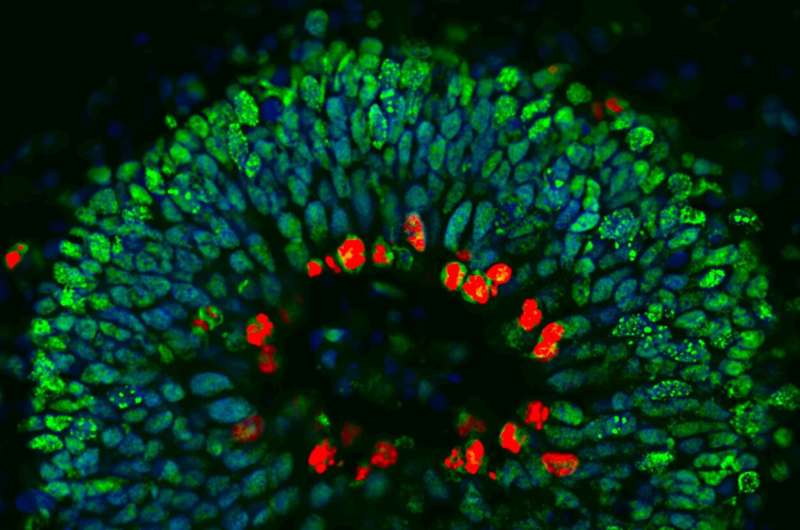This article has been reviewed according to Science X's editorial process and policies. Editors have highlighted the following attributes while ensuring the content's credibility:
fact-checked
peer-reviewed publication
trusted source
proofread
'Disease in a dish' model sheds light on the triggers for some forms of dementia

New understanding of a gene that is linked to some forms of dementia and other age-related diseases gives scientists fresh hope that action can be taken against these diseases long before the onset of symptoms.
The gene—called Angiogenin or ANG—is associated with a number of neurodegenerative diseases commonly associated with old age, including frontotemporal dementia (FTD), motor neuron disease (MND) and Parkinson's disease.
In their latest research, scientists at the University of Bath have found this gene—in its healthy state—plays an important role in the pace at which undifferentiated stem cells develop into specialized nerve cells.
In its mutated form, ANG causes stem cells to persist in their original state longer than they should. In lab experiments, this slowing down of the differentiation process was seen to result in striking neurodevelopmental defects in nerve cells once they had reached their adult form.
"This suggests nerve-cell degeneration may be primed by defects occurring during early development," said Dr. Vasanta Subramanian, who led the research from the Department of Life Sciences.
The study is published in the Journal of Pathology.
In earlier work, the same Bath research group found that ANG, in its healthy form, protects nerve cells against damage, degeneration and impairment of function. By contrast, the mutated form of the gene causes nerve cells to be more susceptible to stress (a natural occurrence as cells age and experience wear and tear), leading to premature cell death.
"This new discovery adds to our understanding of Angiogenin and its importance in protecting us from diseases associated with aging," said Dr. Subramanian.
Mini-brains grown in the lab
For their latest study, the researchers studied a family affected by both frontotemporal dementia and motor neuron disease. Genetic tests showed that some family members had mutations in Angiogenin while others did not.
For all family members, 'mini-brains' were grown in the lab. A mini-brain is a tiny 3D structure grown from clusters of human stem cells. It provides scientists with a realistic model to study the step-by-step development of disease. It also provides an ideal structure on which to screen drugs.
The researchers observed striking neurodevelopmental defects in the mini-brains of family members carrying the ANG mutation.
"This seems to indicate that subtle development defects play a role in disease susceptibility or onset," said Dr. Subramanian. "I envisage a time when we will be identifying people who are susceptible to these diseases, screening them for genetic mutations and offering early-intervention gene therapy to fix the defects."
Dr. Subramanian said more research is needed to elucidate the mechanisms by which ANG acts to protect cells and to better understand its function in stem cells.
More information: Ross Ferguson et al, Neural stem cell homeostasis is affected in cortical organoids carrying a mutation in Angiogenin, The Journal of Pathology (2024). DOI: 10.1002/path.6244

















